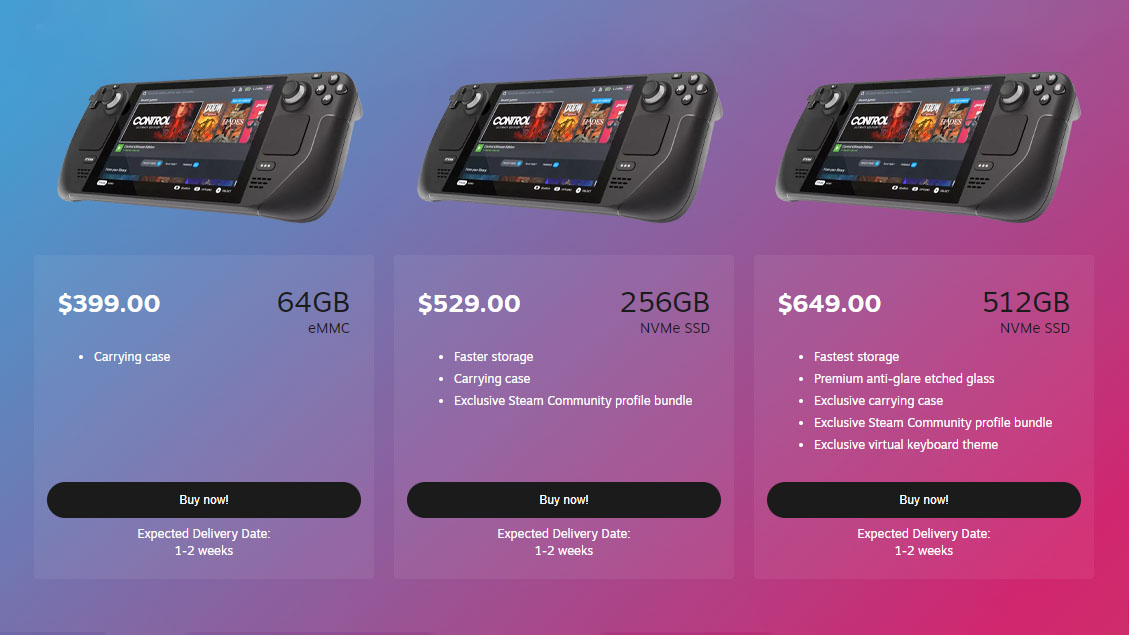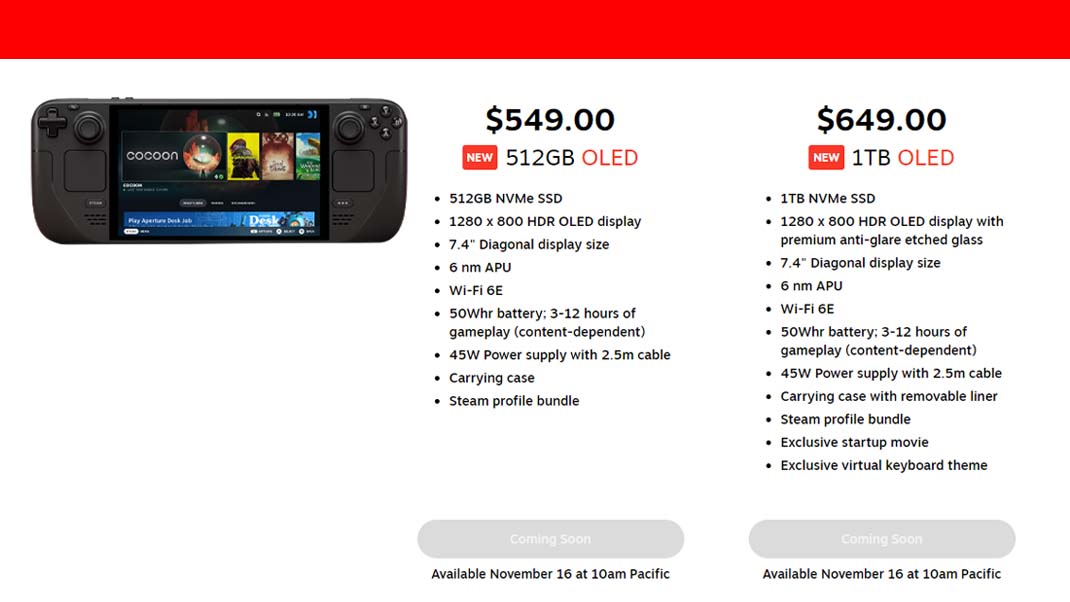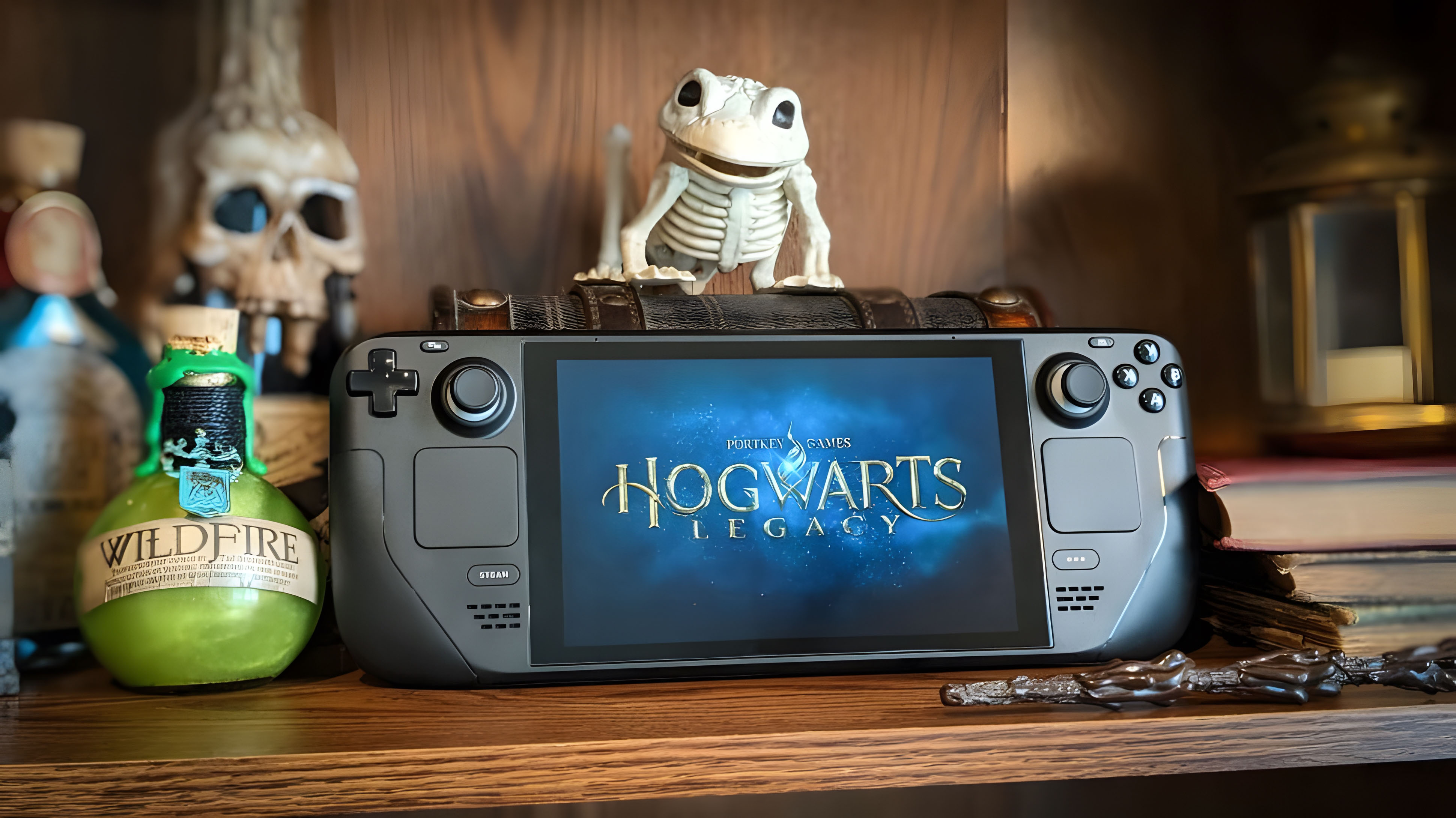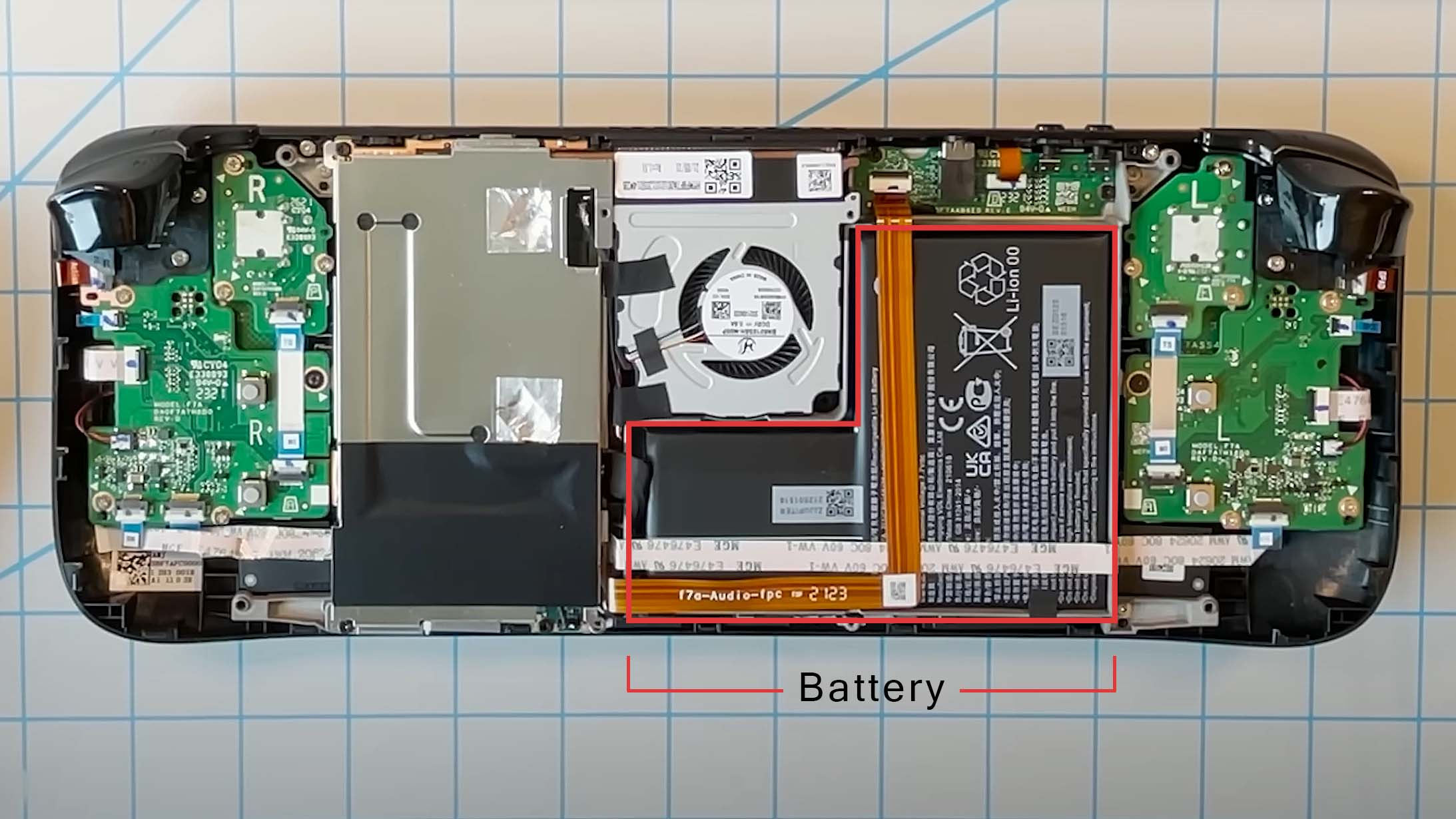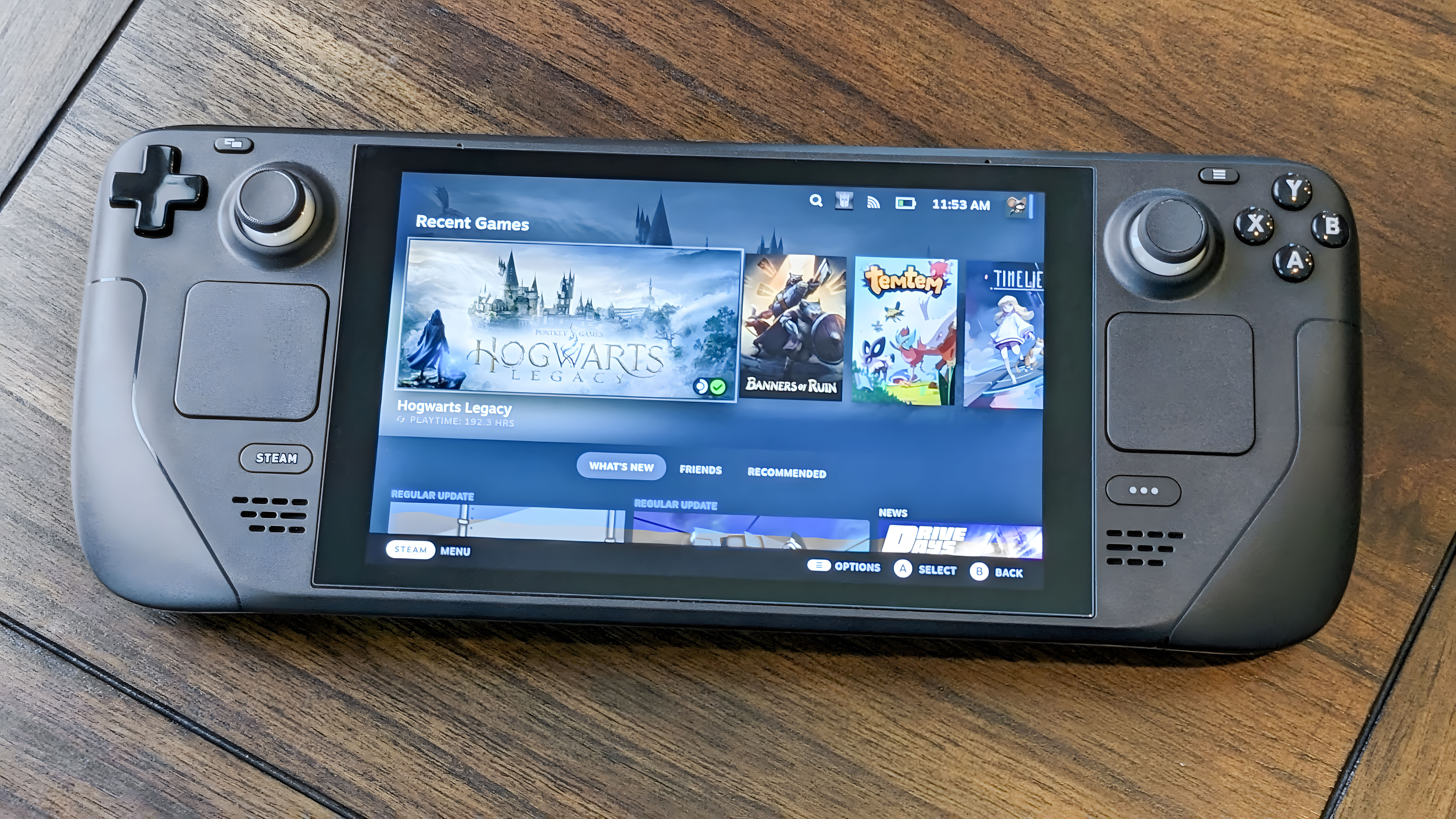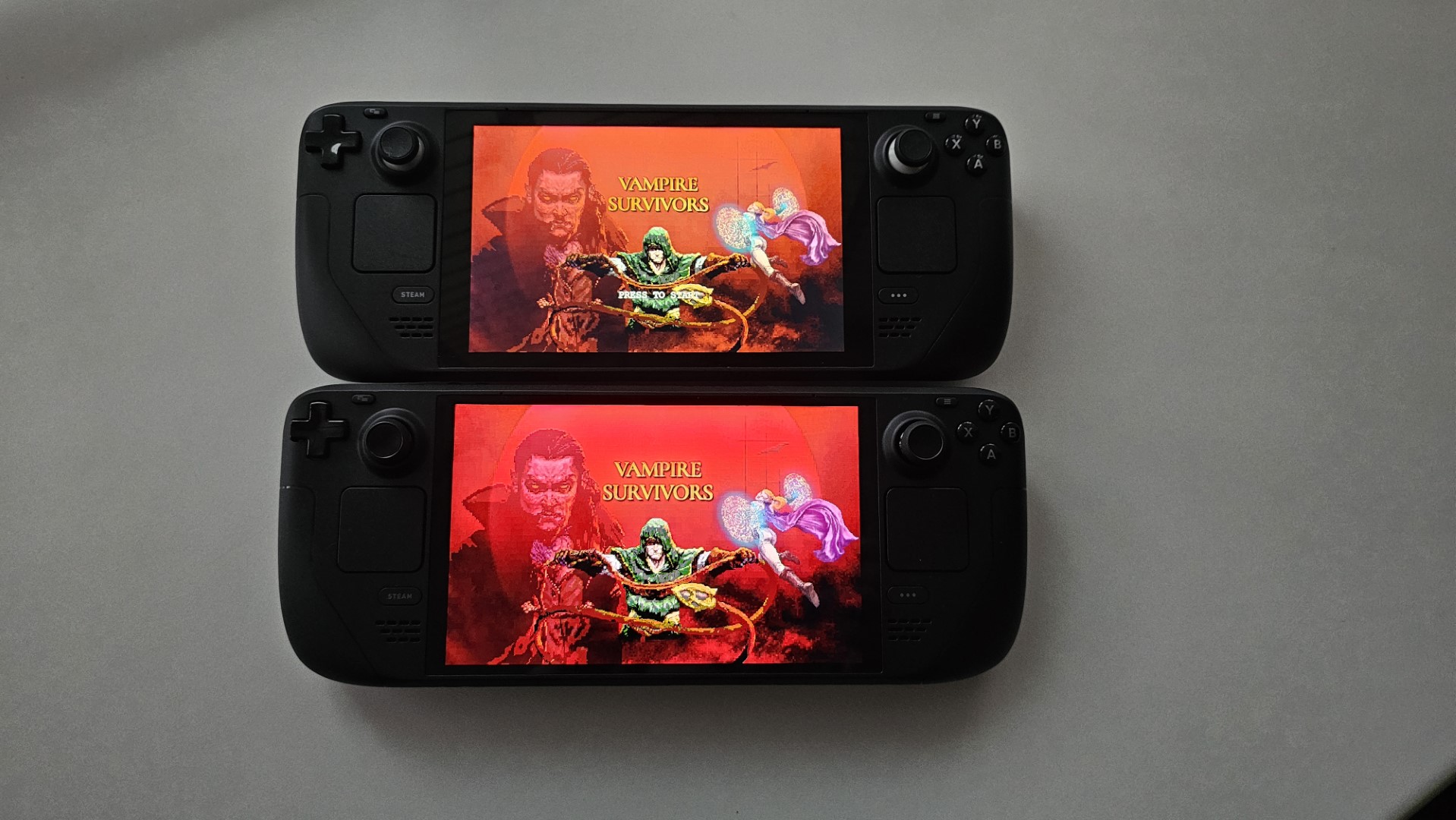Steam Deck OLED vs Steam Deck LCD: What are the differences?
A system refresh with improved screen and battery life.
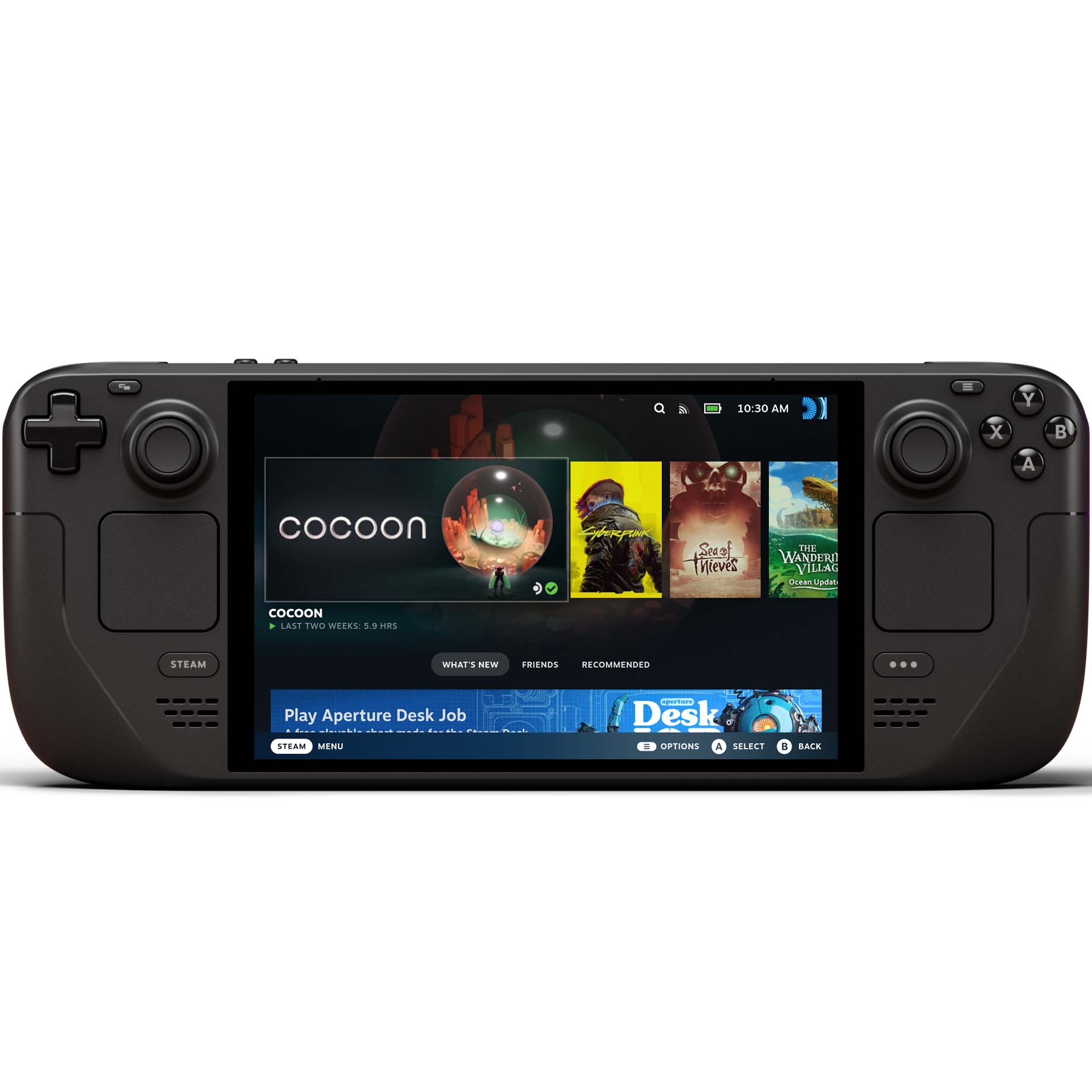
Valve is stepping things up with this improved Steam Deck that features an OLED display. Colors come through more vividly and in better contrast against true black on this screen. What's more, it supports a higher refresh rate of 90Hz, the battery life is longer, and storage options are larger. These additions do make it more costly than the original, though. Depending on availability, it might be hard to get your hands on it.
Pros
- All the perks of the original Steam Deck
- OLED display provides better color and true black
- Larger storage capacity options
- Higher refresh rate
- Longer battery life
Cons
- More expensive
- Might be hard to get

The original Steam Deck is a reliable little system that is specifically designed to play Steam Deck Verified games from your library. The trackpads provide especially good control, and the system is well-balanced to feel good in your hands. This older version doesn't have as much storage space, as large of a screen, or as good of a refresh rate. However, it is more affordable and might be a better option for people on a budget.
Pros
- Less expensive Steam Deck
- Works well with optimized Steam games
- Great balance and grips
Cons
- The screen isn't as good
- Battery doesn't last as long
- Lower refresh rate
- Weighs a little more
The Steam Deck LCD made a big splash when it released in February 2022 and ever since then it has gotten plenty of attention as one of the best gaming handhelds for accessing your library of Steam games. Now, Valve's latest refresh of the system, the Steam Deck OLED, promises to improve on a few of the original device's features with the titular OLED display and additional configuration options.
Both versions of these handhelds will serve you well when playing your games, but one is definitely better than the other. Let's dive in and look at all of the known differences between the two Steam Deck versions.
Steam Deck OLED vs Steam Deck LCD: Specs
The new Steam Deck OLED goes on sale on Nov. 16, 2023 while the original Steam Deck LCD is currently available for purchase. Before we dive into all of the similarities and differences between the original Steam Deck LCD and the new Steam Deck OLED, take a look at the cold hard specs.
| Header Cell - Column 0 | Steam Deck | Steam Deck OLED |
|---|---|---|
| Release date | Feb. 25, 2022 | Nov. 16, 2023 |
| Price | $349 | $399 | $449 | $549 | $649 |
| CPU | 7 nm AMD APU Zen 2 4c/8t, 2.4-3.5GHz (up to 448 GFlops FP32) | 6 nm AMD APU Zen 2 4c/8t, 2.4-3.5GHz (up to 448 GFlops FP32) |
| GPU | 8 RDNA 2 CUs, 1.0-1.6GHz (up to 1.6 TFlops FP32) | 8 RDNA 2 CUs, 1.6GHz (1.6 TFlops FP32) |
| RAM | 16 GB LPDDR5 on-board RAM | 16 GB LPDDR5 on-board RAM |
| Storage | 64GB | 256GB | 512GB | 512GB SSD | 1TB SSD |
| Display | 7-inch IPS LCD 1280 x 800 x RGB | 7.4-inch HDR OLED, 1280 x 800 x RGB |
| Refresh Rate | 60Hz | Up to 90Hz |
| Connectivity | Bluetooth 5.0, Wi-Fi 5 | Bluetooth 5.3, Wi-Fi 6E |
| Audio | Stereo with embedded DSP for an immersive listening experience | Stereo with embedded DSP for an immersive listening experience |
| Battery | 40Whr battery. 2 - 8 hours of gameplay | 50Whr battery. 3-12 hours of gameplay |
| Weight | Approx. 669 grams | Approx. 640 grams |
| Dimensions | 298mm x 117mm x 49mm | 298mm x 117mm x 49mm |
Now that you've had a chance to look at the differences, I'll go more into detail about what these configuration options mean for you and your gaming experience.
Steam Deck OLED vs Steam Deck LCD: Display
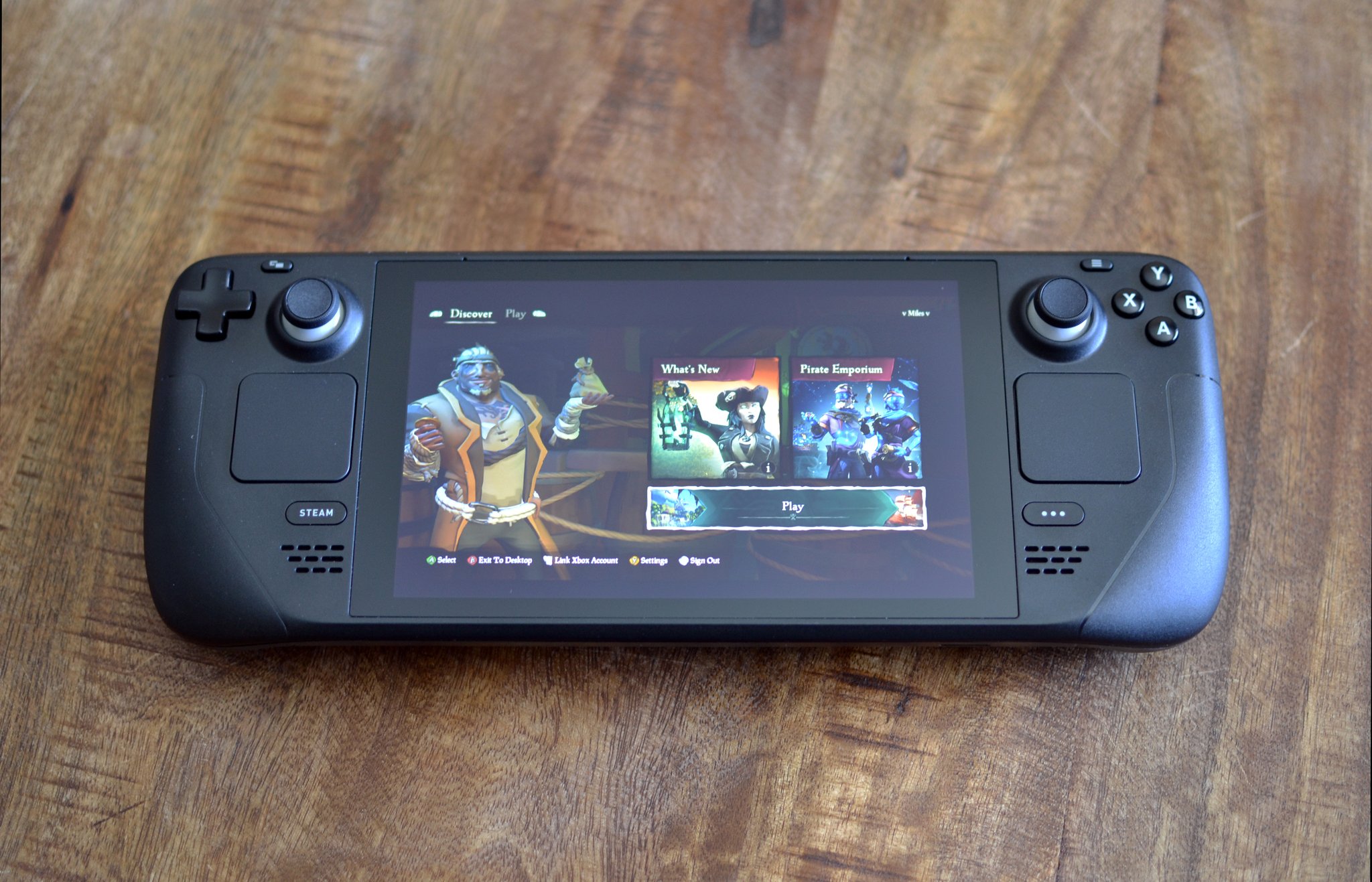
- Best Steam Deck accessories
- Best Steam Deck alternatives
- Best Steam Deck microSD cards
- Steam Deck vs Legion Go
As you can easily tell by the name of the original and new Steam Deck, one of the biggest differences between the two has to do with the display. The original features a 7-inch LCD panel that can reach up to a 60Hz refresh rate, while the new version has a slightly larger 7.4-inch OLED that can reach up to a 90Hz refresh rate.
As you can read more about in my OLED vs QLED vs AMOLED vs Mini LED display comparison, OLEDs are currently some of the very best screens on the market. This is because they tend to make colors come through far more vibrantly than other displays and produce more crisp imagery (even without increasing resolution). Another huge perk of OLEDs that makes them better for gaming is that they produce true black, meaning that the pixels actually turn off instead of going grey when showing black — this is the reason that colors and details come through so much better. True black makes it easier to see colors and details even in darker scenes, which is especially nice in certain games.
We saw a similar refresh like this back in 2021 when Nintendo released the slightly larger Switch OLED. Although the resolution wasn't changed at all, Nintendo Switch game visuals looked much better on the new Switch OLED, and the slightly larger screen really made a difference in pulling players more into the game world.
All the latest news, reviews, and guides for Windows and Xbox diehards.
This is going to be the same thing that happens with the Steam Deck OLED. Although resolution won't actually be improved, the OLED screen will make all visuals on the Valve handheld look better than they do on the original Steam Deck.
Steam Deck OLED vs Steam Deck LCD: Storage
One of the most important aspects of a gaming handheld is how much storage it has. With more room, you have space for more game files. However, if you have a shorter amount of space you will need to invest in one of the best microSD cards for Steam Deck or else you'll spend a ton of time deleting, archiving, or otherwise rearranging your files to make room for any new games you get.
The original Steam Deck LCD comes in three storage sizes that determine the handheld's cost. Anyone really on a budget can get the most affordable one with a 64GB SSD for just $399. After that, there's a 256GB SSD version for $529 and a 512GB SSD version for $649.
It should be noted that pricing for all three of the original Steam Deck LCD versions is reduced on Valve's website for a limited time to celebrate the launch of the new Steam Deck OLED. During this discount period, the 64GB version is selling for just $349, the 256GB SSD version is selling for $399, and finally the 512GB SSD version is selling for $449.
Meanwhile, the brand new Steam Deck OLED offers higher storage options, but this is also part of what makes it more costly. There are two options to choose from: A 512GB SSD OLED for $549 or a 1TB SSD OLED for $649. If you're the kind of person who tends to play a ton of Steam games, then it's really not a bad idea to go with the 1TB version. But going with the 512GB SSD version can save you money. Plus, just as with the Steam Deck LCD, you can add additional storage space via a microSD card.
This all being said, some Steam Deck LCD users have taken it upon themselves to open their handhelds and install third-party SSDs. For instance, the WD_Black SN770M SSD is a great option. But you should only do this if you feel comfortable opening up your expensive device.
Steam Deck OLED vs Steam Deck LCD: Battery life
One of the most exciting aspects of the new Steam Deck OLED is Valve's claim that it will have significantly better battery life than the Steam Deck LCD. To be honest, this is one area that gaming handhelds really tend to disappoint. The Steam Deck LCD's battery can drain in under an hour if a really intensive game like Cyberpunk 2077 is being run. Then again, the Steam Deck LCD can run simpler games like Celeste for up to eight hours, depending on settings. So, it's good to hear there are strides in this area with the new OLED version.
According to Valve, the Steam Deck OLED has a 50Whr battery that can provide between three and 12 hours of gameplay, depending on the game and system settings. We'll have to check these claims out for sure, as they might not entirely be accurate. But still, any claim of improvement is a good thing.
At any rate, this should hopefully make it so you can get more time out of the Steam Deck OLED when on the go before you have to plug it in and recharge.
Steam Deck OLED vs Steam Deck LCD: Hardware
Much like the Nintendo Switch OLED compared to the original Nintendo Switch, the internals of the Steam Deck OLED aren't that different from the Steam Deck LCD. The AMD APU is now 6nm, but offers the same performance, so there are no significant changes there. Aside from the battery that I've already mentioned, there's really only a slight difference in RAM, Bluetooth, and an updated Wi-Fi chip.
Specifically, the Steam Deck LCD features Bluetooth 5.0, Wi-Fi at 2.4Ghz and 5Ghz, and RAM with a 5500 Mt/s speed. Meanwhile, the Steam Deck OLED utilizes Bluetooth 5.3, a Wi-Fi 6E chip (2.4Ghz, 5Ghz, and 6Ghz), and RAM at a slightly faster 6400 Mt/s.
Don't worry. If you're really interested in seeing a Steam Deck with far improved internals, then you'll be happy to know that a Steam Deck 2 has officially been announced, but that's really all we know about it so far. Its release is possibly years down the road.
Steam Deck OLED vs Steam Deck LCD: Weight and dimensions
Considering that the Steam Deck OLEDs display is larger, I expected the casing to be a bit bigger as well, but this is not the case. Both measure in at 298mm x 117mm x 49mm (about 11.7 x 4.6 x 1.9 inches). This likely means that the OLED display has less of a bezel than the original LCD display does.
Additionally, the new Steam Deck OLED weighs slightly less at 669 grams (about 1.47 pounds) compared to the original Steam Deck LCD's 649 grams (about 1.41). So the newer OLED version could be a little less strain on your hands during long gaming sessions.
Steam Deck OLED vs Steam Deck LCD: Which one should you buy?
There's no denying that the Steam Deck OLED is the superior version. If you want the very best Steam Deck experience, then you should totally go for the 1TB SSD option and see just how well your library of Steam Deck-verified games shines through on this new OLED display. Plus, you'll be able to play more on the go before needing to plug it in, which makes it far more convenient to use.
That all being said, if you're on a tight budget, the original Steam Deck LCD is still a great option as well. It might not be as flashy, and it might not last as long, but it will still allow you to play your favorite Steam Deck-verified games without putting as much of a dent in your wallet.

The original Steam Deck's biggest perk is that it is far more affordable than the OLED version. It runs Steam Deck Verified games very well and provides great buttons and grips to make the system easier to hold for long stretches. If you want a way to play your Steam games on the go but don't want to spend too much, this is the handheld to go with.

Self-professed gaming geek Rebecca Spear is one of Windows Central's editors and reviewers with a focus on gaming handhelds, mini PCs, PC gaming, and laptops. When she isn't checking out the latest games on Xbox Game Pass, PC, ROG Ally, or Steam Deck; she can be found digital drawing with a Wacom tablet. She's written thousands of articles with everything from editorials, reviews, previews, features, previews, and hardware reviews over the last few years. If you need information about anything gaming-related, her articles can help you out. She also loves testing game accessories and any new tech on the market. You can follow her @rrspear on X (formerly Twitter).


